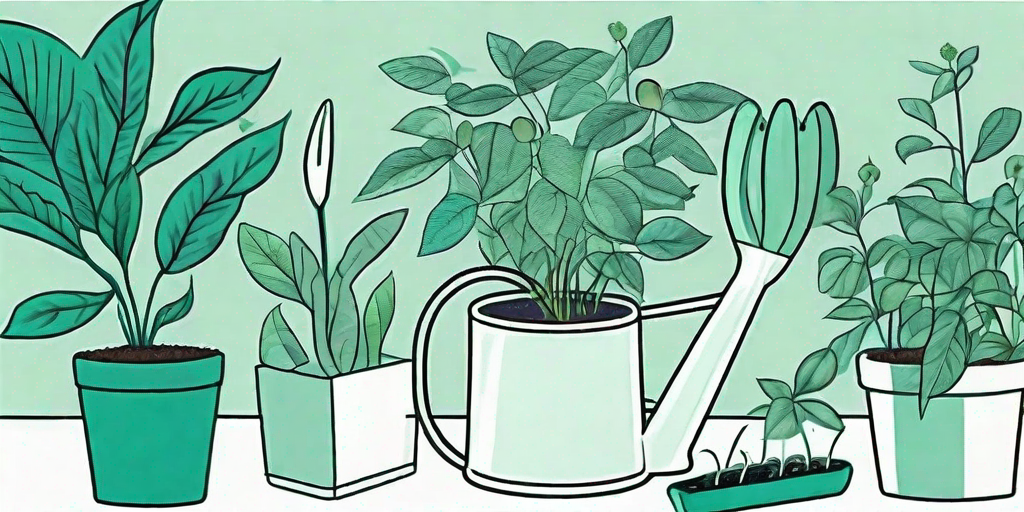
If you're looking to add a little heat to your garden, then look no further than the peperoni plant. This fiery little number is not only a great addition to your garden, but it's also a fantastic ingredient to spice up your cooking. But how do you grow a peperoni plant, you ask? Well, sit back, grab a cup of tea (or a glass of wine, we're not judging), and let's dive into the world of peperoni plants.
Understanding the Peperoni Plant
First things first, let's get to know our subject a little better. The peperoni plant, also known as Capsicum annuum, is a member of the nightshade family. This might sound a bit ominous, but don't worry, it's not as scary as it sounds. The nightshade family also includes tomatoes, potatoes, and eggplants, so you're in good company.
Peperoni plants are native to the Americas, but they've made their way around the world thanks to their versatility and, of course, their delicious taste. They're a staple in many cuisines, from Italian to Thai, and they can range in heat from mild to tongue-numbingly hot.
The Anatomy of a Peperoni Plant
Peperoni plants are usually bushy and can grow up to 60 cm tall. They have dark green leaves and white flowers, which eventually turn into the peperoni peppers we all know and love. The peppers start off green and then change color as they ripen, usually turning red, yellow, or orange.
One of the unique things about peperoni plants is that they can have flowers, immature fruit, and mature fruit all at the same time. This means that you can have a continuous harvest throughout the growing season, which is great news for all you peperoni lovers out there.
How to Grow Peperoni Plants
Now that we've got to know the peperoni plant a little better, let's get down to the nitty-gritty: how to grow them. The good news is that peperoni plants are relatively easy to grow, even for beginners. All they need is a sunny spot, well-drained soil, and a bit of TLC.
Peperoni plants are usually grown from seeds, which you can buy from a garden center or online. You can start the seeds indoors in late winter or early spring, and then transplant them outside once the risk of frost has passed.
Step-by-Step Guide to Growing Peperoni Plants
- Start by filling a seed tray or pots with a good quality seed compost. Make sure the compost is moist, but not waterlogged.
- Place the seeds on the surface of the compost, spacing them about 2 cm apart. Cover the seeds with a thin layer of compost.
- Place the seed tray or pots in a propagator or cover with a plastic bag and put in a warm place. The seeds need a temperature of around 18-20°C to germinate.
- Once the seedlings are large enough to handle, transplant them into individual pots. When the risk of frost has passed, you can plant them outside in a sunny, sheltered spot.
- Water the plants regularly, but avoid overwatering as this can cause the roots to rot. Feed the plants with a high potash fertilizer once they start to flower.
- Harvest the peppers when they are fully grown and have reached the desired color. Remember, the longer you leave the peppers on the plant, the hotter they will be.
Common Problems and How to Solve Them
Like all plants, peperoni plants can suffer from a few common problems. But don't worry, we've got you covered. Here are some of the most common issues and how to solve them.
Problem: Aphids
Aphids are small insects that can cause damage by sucking the sap from the plants. If left untreated, they can stunt the plant's growth and spread diseases.
Solution: You can control aphids by spraying the plants with a soap and water solution, or by introducing natural predators like ladybugs into your garden.
Problem: Blossom End Rot
Blossom end rot is a common problem in peperoni plants. It's caused by a calcium deficiency and results in a dark, sunken spot at the blossom end of the fruit.
Solution: To prevent blossom end rot, make sure the plants are getting enough calcium. You can do this by adding lime to the soil or using a calcium-rich fertilizer.
Frequently Asked Questions
How long does it take for a peperoni plant to grow?
From seed to harvest, it usually takes about 120 to 150 days for a peperoni plant to grow. However, this can vary depending on the variety and the growing conditions.
Can I grow a peperoni plant indoors?
Yes, peperoni plants can be grown indoors. In fact, they make great houseplants. Just make sure they get plenty of light and are kept in a warm spot.
How often should I water my peperoni plant?
Peperoni plants like to be kept moist, but not waterlogged. A good rule of thumb is to water them when the top inch of soil feels dry to the touch.
Conclusion
So there you have it, everything you need to know to grow your own peperoni plants. With a bit of care and attention, you can have a bumper crop of peperoni peppers to spice up your meals. So why not give it a go? Your taste buds will thank you.















